A significant factor that scares people away from electric vehicles is confusion around charging. Every gas station in the land is fitted with nozzles that will fill any gasoline-powered car's fuel tank. But not all EVs use the same plug, and then there's the matter of alternating current (AC) versus direct current (DC) systems. And what do the different levels of charging mean?
The good news is that it's not that complicated, and we're here to explain everything you need to know.
EVs require electricity to charge, as the "E" in EV suggests. But that electricity can be AC, like the appliances in your home, or DC, like a USB device, only many times more powerful.
First, a quick note on charging times. Many factors can affect how long charging takes, including the capacity of the battery, its state of charge at the start of the session, the battery's temperature at the start of the session, the actual cell chemistry, and, of course, how much power can be drawn by the EV's battery. Charges can range from a few miles of range added every hour, if you're relying on a household 120 V socket, to as much as 100 miles of range in 10 minutes if you're charging from a powerful DC charger.
It's also worth noting that an EV's battery has a gross capacity that is larger than the useable capacity. Automakers build some overhead into the pack that never gets fully depleted, and we have seen some car companies increase the net capacity with software updates as they become more comfortable with monitoring battery life.
On that topic, remember that any EV sold in the US must have an eight-year/100,000-mile battery warranty. And despite any scary stories you may have heard, there is no reason to think an EV's battery will have to be replaced any sooner than a gasoline-powered car needs a new engine. Finally, since Ars is a US-based site for a primarily US-based audience, this article is focused on US EVs and chargers.
Level 1
Let's start with AC charging, the least-powerful option that takes the longest time to recharge a battery. Most EV owners can charge at home, and at-home charging means using AC. AC charging is also more kind to a lithium-ion EV battery than fast charging, although, again, the myth of deteriorating EV batteries is a misconception; your battery should last the lifetime of the car, just as an engine or fuel tank does.
The cheapest way to do AC charging, and the slowest, is to use a normal 120 V outlet. That's unlikely to supply the car's battery with much more than 1.5 kW, and since EV batteries are mostly in the range of 60–120 kWh, you can see you'll be in for an impractically long wait if you want to take a battery from a low state of charge back to 100 percent. In fact, many OEMs have stopped listing level 1 charge times in their press kits.
But AC charging will add between two to four miles of range each hour, and plenty of EV owners do use level 1 charging, particularly on older EVs with smaller batteries, like the Chevrolet Bolt or Nissan Leaf. And while a full charge might take several days to charge starting from empty if it has a big battery (like a Hummer EV), an EV primarily used for short trips is much easier to keep topped off so that each morning starts with a full battery.
Level 2
The next option still uses AC electricity but at a higher voltage and amperage—240 V and as much as 80 A, although more likely somewhere closer to half of that. How much power an EV can draw from a level 2 supply depends on that car's onboard charger and the amperage of the outlet that the EV supply equipment (EVSE) is connected to. Some might be as low as 3.3 kW in the case of a plug-in hybrid EV, but 7.7 kW or 9.6 kW are common for battery EVs, with a handful able to charge at 19.2 kW.
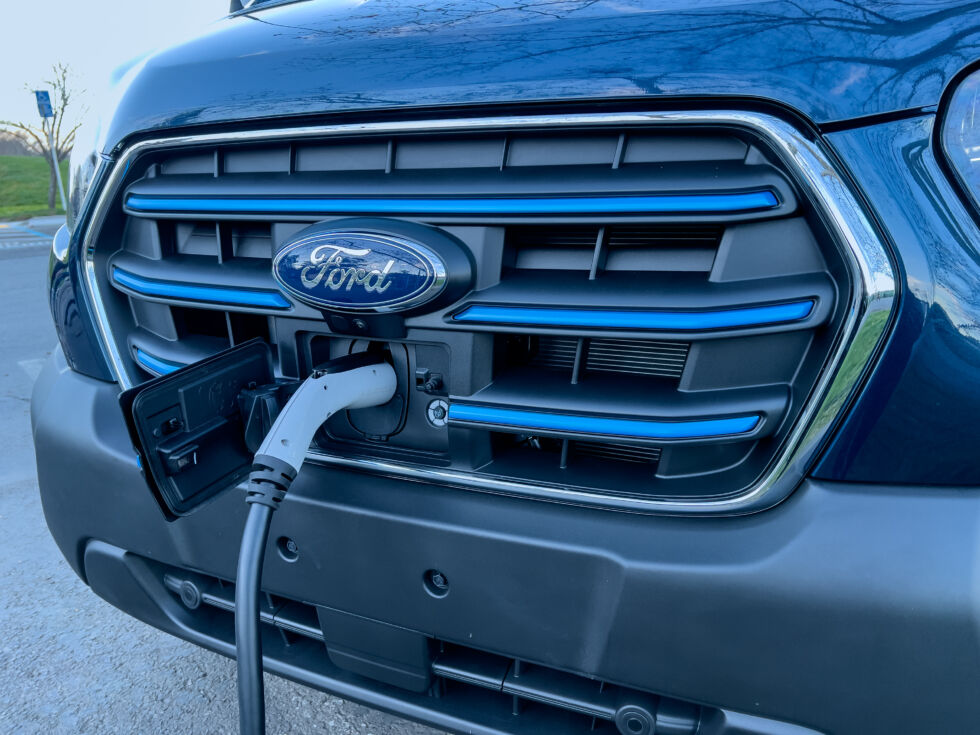
An EV usually comes from the manufacturer with a portable EVSE, most often rated at 32 A. For level 2 charging at home at higher rates of power, an EV owner will need to install a hardwired EVSE, either from the OEM or a third party like Juicebox. Also, the free chargers you might find at a shopping mall or parking garage will almost certainly be level 2 chargers.
Again, it's impossible to give exact charging times to 100 percent without knowing the make and model of the EV and the EVSE's power, but a level 2 charger will typically be sufficient to recharge a battery EV overnight. You can expect a level 2 charger to add between 10 to 20 miles of range each hour, depending on the specifics of that EV.
Level 3
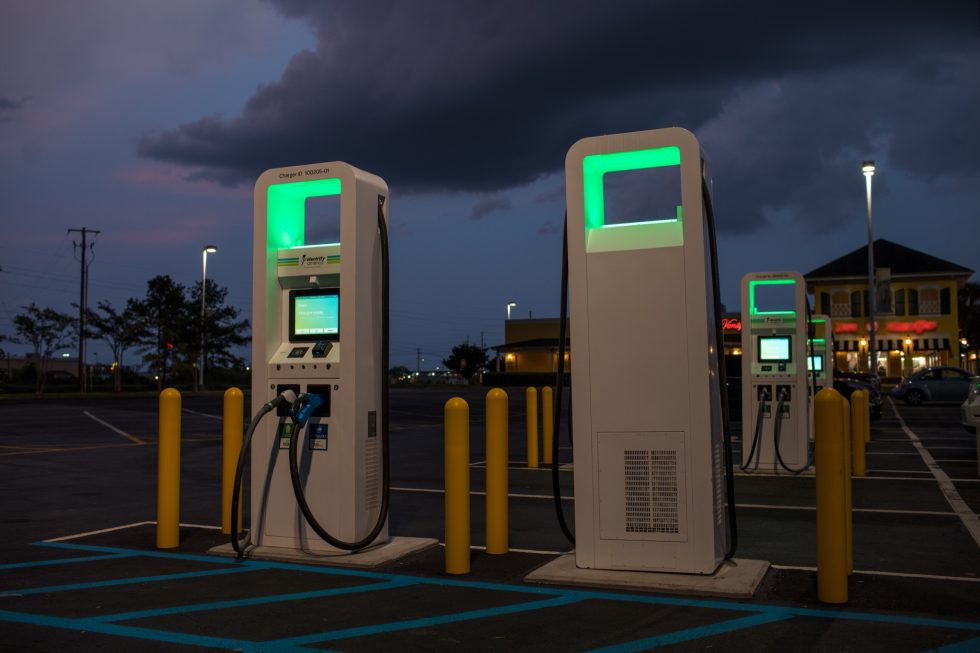
Using DC to recharge an EV is where things get much quicker—and more expensive. Between permits and upgraded electrical infrastructure and the actual cost of the DC charger, plus any battery storage, a DC fast charger can cost anywhere from $150,00 to $200,000, making them impractical for home use. But they're useful if you need to drive farther than your battery's range or if you don't have the ability to charge at home, as a level 3 charge—more commonly called a DC fast charge—will rarely take even an hour.
Unlike with AC charging, DC charge times are invariably only quoted to 80 percent. The line that describes a battery charging over time is not linear; it's S-shaped. That means the first few kWh are charged much more quickly than the last few, and it can take as long to fast-charge a battery from 80 to 100 percent as it can from 10 to 80 percent.
Level 3 chargers come in many different kW ratings. Older (or broken) chargers might offer as little as 50 kW—OK for older EVs like the Chevrolet Bolt—but that means more than an hour of waiting time for a newer EV with a larger battery.
As ever, actual charging times will depend on a multitude of factors. Between 30 to 40 minutes to 80 percent is quite common for new EVs, particularly if they're limited to lower power or have battery capacities on the large side. Most EV batteries operate at 400 V, but some use 800 V or even 920 V, and these EVs can charge much more rapidly if they're plugged into a 350 kW level 3 machine. This is how a Porsche Taycan can charge to 80 percent in 22.5 minutes or a Kia EV6 or Hyundai Ioniq 5 can charge to 80 percent in 18 minutes.
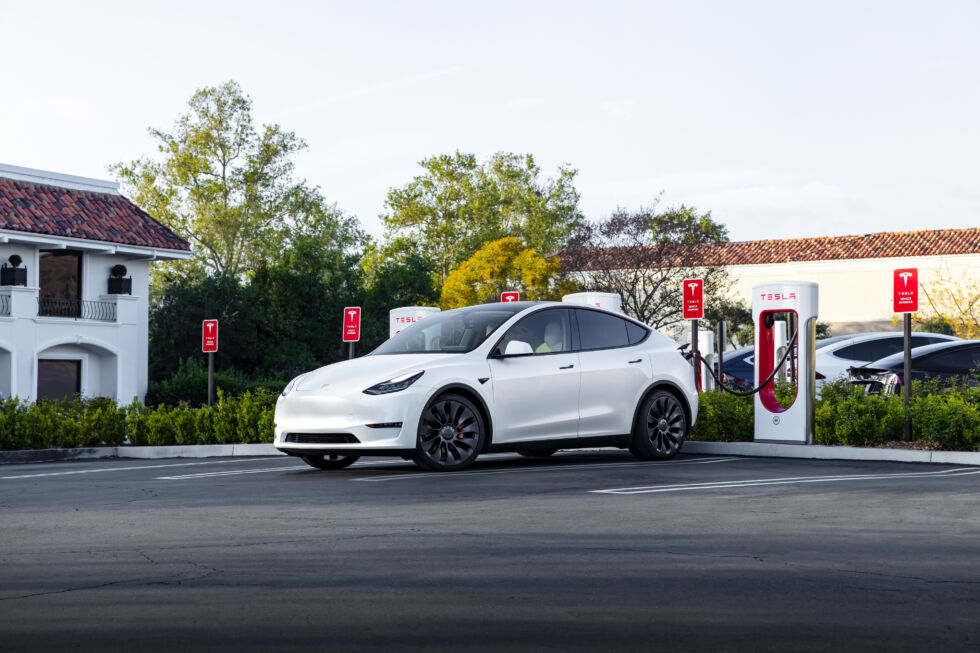
One thing worth bearing in mind is that many charging networks currently appear more focused on deploying new chargers than maintaining existing ones. Although many public level 3 chargers have credit card readers, they're often inoperable, and you may need to download the charging network's app (such as Electrify America, EVGo, ChargePoint, and so on) and create an account to use a charger with the least amount of hassle.
Plugs
Then there's the plug business. While it's true that not all EVs use the same plugs, the reality in 2022 is that there is, in fact, a de facto standard across the US that every new EV sold today uses, with one large and one small exception. This means that it doesn't matter if you drive a Volkswagen ID.4, a Mercedes-Benz EQS, a Nissan Ariya, or a Kia EV6 (to name but four)—all of them use the same plugs and can charge at the same chargers.
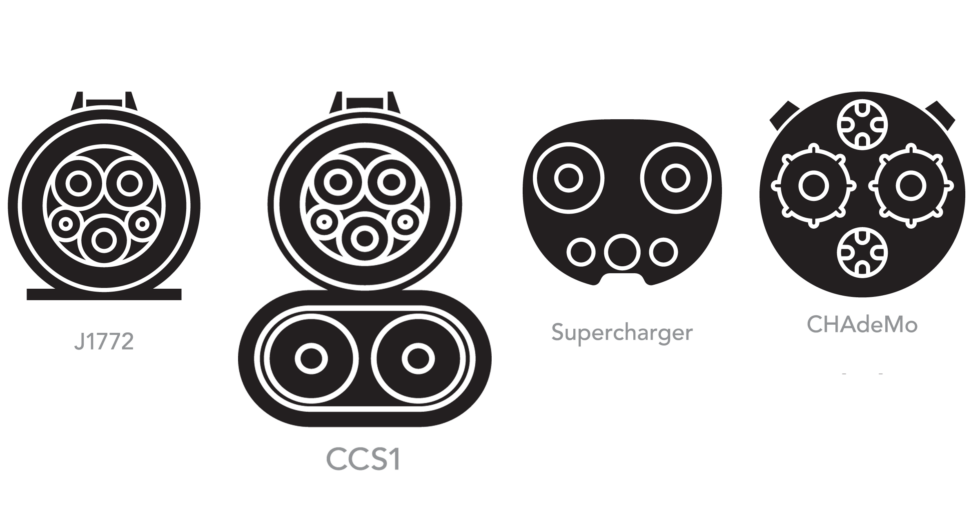
The Tesla and CHAdeMO plugs are not to scale, but the CCS Type 1 and J1772 plugs are both shown at the same scale.
Level 1 and level 2 chargers both use the same plug, the SAE J1772. It's a relatively bulky thing with five pins and is rated for everything from 1.4 kW to 19.2 kW.
The de facto standard level 3 plug is the Combined Charging System (CCS) Type 1. It's a much bulkier plug since it combines the already big J1772 plug with two large DC pins below, all attached to a thick and heavy cable. If you buy a new EV today from almost any car maker, it will use CCS Type 1 to fast-charge.
The big exception is Tesla. The company deployed the first of its Superchargers—its brand name for level 3 chargers—in September 2012, while the rest of the auto industry was still getting its act together. So it went with a proprietary plug of its own, a much more elegant and much lighter design. However, even this may change.
The European Union isn't crazy about companies locking customers into proprietary plugs, and European Teslas actually use the European version of CCS, Type 2. Here in the US, federal funding for charging networks requires that the chargers adhere to industry standards, which has led Tesla to explore the idea of adding CCS Type 1 plugs to Superchargers at some point in the future.
The small exception is the Nissan Leaf, which used a rival Japanese charging standard called CHAdeMO. This offered an even bigger, even more cumbersome connector. What's more, it required an EV to have two separate sockets, one CHAdeMO and a second J1772, unlike CCS, which includes the J1772 port. CHAdeMO remains a thing in Japan, but the only EV on sale in the US that still uses CHAdeMO is the Nissan Leaf, and that model is reportedly not long for this world. Consequently, CHAdeMO chargers may be harder to find, but every Electrify America location should include at least one CHAdeMO plug.
Route planning
Of course, in order to charge an EV on the road, you have to be able to find a public charger. And unlike gas stations, charging stations don't often advertise themselves with large illuminated signs that are visible from miles away. That means a road trip requires an extra planning step. But don't worry—it's not nearly as difficult as having to print out MapQuest directions like we used to do, never mind the olden days of road atlases.
Odds are good that the EV you're driving will know where all the chargers are and will be happy to navigate you to them via its onboard navigation system. Depending on the car, it might even know the status of the actual chargers there and may even begin heating your battery to ensure the quickest fast charge once you plug in.
But, many EV drivers rely on third-party smartphone apps, including PlugShare and A Better Route Planner (although this one requires a subscription). Usually, these apps let you plan routes, taking into account the battery capacity and efficiency of the EV you're driving, its starting state of charge, and how much charge you want remaining when you arrive at your destination.
It's also useful to download the apps for charging networks, as those apps will provide the real-time status of chargers—whether they're functional, in use, or broken. If you're in a pinch, especially if you're driving in rural areas, some dealerships will let you use their level 2 chargers. An app like PlugShare will list those, along with check-ins from users that have successfully charged there.
You can even use the US Department of Energy's database of EV charging stations website (or its smartphone apps), which as of press time contains 49,430 level 2 and 3 locations in total, of which 6,415 are level 3 fast chargers.
Expect those numbers to grow significantly in the next few years as the federal government spends $5 billion on fast chargers located roughly every 50 miles across the Interstate Highway System.


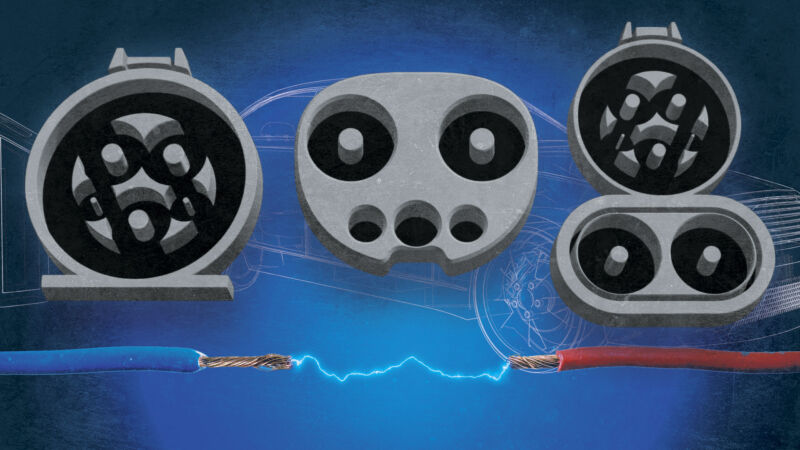
3175x175(CURRENT).thumb.jpg.b05acc060982b36f5891ba728e6d953c.jpg)

Recommended Comments
There are no comments to display.
Join the conversation
You can post now and register later. If you have an account, sign in now to post with your account.
Note: Your post will require moderator approval before it will be visible.